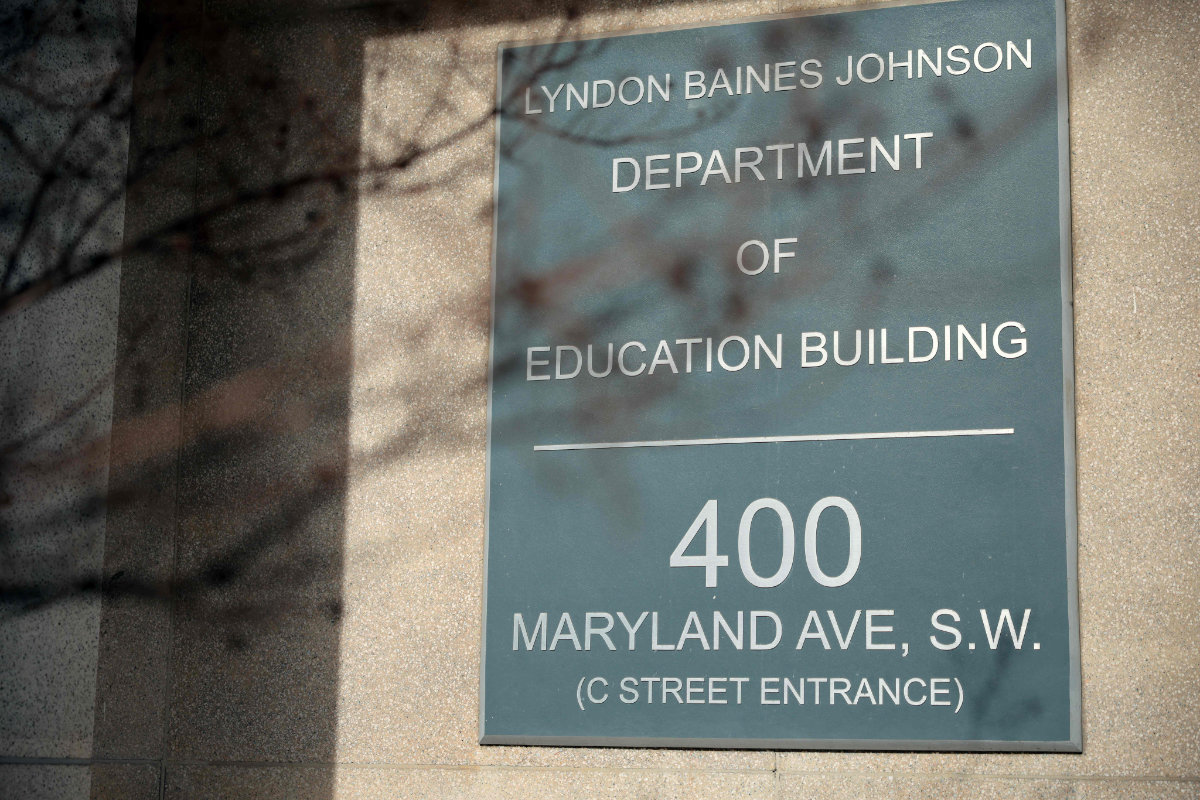CHICAGO: Arab American leaders hailed as a “victory” the results of a Democratic presidential primary election in Michigan on Tuesday, in which more than 100,000 voters snubbed President Joe Biden’s nomination bid by choosing the “uncommitted” option on the ballot.
Campaigners had urged Arab voters to do this in protest against the Biden administration’s unwavering support for Israel’s bombardment of the Gaza Strip, despite the thousands of civilians who have been killed or injured as a result.
Primaries are elections held by the Democratic and Republican parties in every state to select their candidates for the presidential election. The “uncommitted” voting option is only offered by some states. Campaigners said the number of Arab Americans in Michigan who voted “uncommitted” represented a solid rejection of Biden’s candidacy.
He still comfortably won the primary. With more than 95 percent of the votes counted on Wednesday afternoon, he had received 618,441, representing 81.1 percent of the total. The number of “uncommitted” votes stood at 101,107, or 13.3 percent. Two other candidates, Marianne Williamson and Dean Phillips, each received about 3 percent of the vote.
The “uncommitted” vote could nevertheless prove significant in the presidential election if it translates into loss of support for Biden or a switch of allegiance to his likely rival, Donald Trump. Biden claimed victory in Michigan at the 2020 presidential election by the relatively narrow margin of 154,188 votes out of more than 5.5 million cast. There are more than 500,000 Arab and Muslim voters in Michigan. In addition, turnout for a presidential election is usually significantly higher than for a primary; about 1.8 million people voted in the Michigan primary on Tuesday, for example, compared with the 5.5 million at the 2020 presidential election.
In Michigan’s Republican primary, Trump comfortably won with 68.2 percent of the vote. Closest rival Nikki Haley received just 26.6 percent, which 3 percent were uncommitted.
The Michigan primary was the first among several identified by Arab American campaign groups as taking place in key swing states where Biden’s victory over Trump in 2020 was particularly narrow.
Arab Americans have launched anti-Biden protest movements in several of those states, the most prominent of which has been #AbandonBiden. Its leaders cite as the main reason for Arab anger the president’s support for and defense of Israel during the war in Gaza, including: the allocation of more than $34 billion in aid and weapons; what they view as the pro-Israel bias of Secretary of State Antony Blinken; and the US decisions to veto three UN Security Council resolutions calling for a ceasefire.
The #AbandonBiden campaign launched on Nov. 1, shortly after Israel invaded Gaza in response to the Hamas attacks on Oct. 7. It criticized Israel for the “brutality” of its military campaign, which has razed cities to the ground, destroying civilian buildings and infrastructure in the process, including mosques, hospitals, churches, schools, homes and businesses. Nearly 30,000 Palestinians have been killed in the territory in the past four months.
Osama Siblani, publisher of the Michigan-based Arab American News, which describes itself as the largest Arab American publication in the US, told Arab News that “empty words” from the Biden administration seeking to placate Arab voters will not work.
“The message has been delivered to Biden loud and clear from Michigan’s Arab Americans: Defeat is waiting for you in November,” he said. “This is only a down payment.”
Imad Hamad, the executive director of the American Human Rights Council, told Arab News: “The community delivered and fulfilled its solid commitment not to commit to the reelection of President Biden.
“The uncommitted votes, as well as the votes of those who flipped the party affiliation from the Democratic Party to Republican speaks for itself, setting the record straight moving forward toward the general elections in November.”
The possibility that the #AbandonBiden campaign might help return Trump to the White House has caused alarm among many traditional Democrat supporters.
Jim Zogby, president of the Arab American Institute and a longtime political activist, said many movements have emerged in response to discontent over Biden’s policies on Israel and Gaza.
“We hoped to send a message that couldn’t be ignored by President Biden and we did just that,” he told Arab News.
“The turnout in the Arab community was great and with the support of our allies we topped over 100,000 votes. This is a huge win.”
Samir Khalil, founder of the Arab American Democratic Club in Illinois, where Biden could face another Arab voter backlash in that state’s primary on March 19, said that the president’s abandonment of Palestinians was “unconscionable and unacceptable.”
He told Arab News: “Four years of Donald Trump doesn’t even come close to comparing to four months of Israel’s killings in the Gaza Strip.
“Over 100,000 people voted for ‘uncommitted’ in the Michigan presidential primary yesterday. This record-breaking total for the uncommitted option sent a loud and clear message to the Democratic Party and the Biden campaign: It is time to take action to end the genocide in Gaza.
Abed Ayoub, president of the American Arab Anti-Discrimination Committee echoed these comments and said: “Uncommitted voters represent diverse demographics, including young voters, progressive voters, and a significant number of voters from ally communities.”
In a message posted on social media platform X, Abdullah Hammoud, the mayor of the Michigan city of Dearborn wrote: “I am overwhelmed by the power of the people, demonstrated today by the number of Michiganders who voted ‘uncommitted’ … Every person who voted ‘uncommitted’ today was personally compelled to use their voice to speak out against President Biden’s support of (Israeli President) Benjamin Netanyahu’s ongoing genocide of the Palestinian people.”
Biden has faced harsh criticism from other groups, including the Council on American Islamic Relations; Our Revolution, founded by progressive Democratic US Senator Bernie Sanders; and Listen to Michigan.
Hassan Abdel Salam, the national coordinator of #AbandonBiden, and the group’s Michigan coordinator, Khalid Turani, released a statement on Wednesday in which they said: “Abandon Biden leaders stand before the nation today, not just as victors in the Michigan primary, but as bearers of a profound and indignant message against President Joe Biden’s oversight of the ongoing US-Israeli genocide in Gaza. This isn’t just a political setback for Biden; it’s a damning indictment of his presidency’s moral bankruptcy.
“Our motivation is driven by the harrowing realities of Gaza, where the statistics of death and despair climb daily under the shadow of a genocide facilitated by Biden’s administration. At least 29,606 innocent men, women and children have been murdered, including more than 12,300 children and 8,400 women; and more than 69,737 wounded, including at least 8,663 children and 6,327 women.
“These aren’t just numbers; they’re a damning testament to the horror and suffering supported by Biden’s foreign policy.”
They added: “As we move from Michigan to the national stage, our message remains unequivocal: We will accept nothing less than justice, accountability and an end to US funding, arming and support of the genocide of the Palestinian people.”
Biden faced no significant challengers in the Michigan primary, so voting “uncommitted” was the best and clearest way to express the outrage and anger of the Arab American community, campaigners said.
To become president, a candidate must win at least 270 of the 538 Electoral College votes up for grabs. Each of the 50 states receives a set number of Electoral College votes based on population size, and they are normally awarded to the candidate that wins the popular vote in the state.
In 2020, Biden won 306 Electoral College votes compared with Trump’s 232. If Arab Americans votes prevent Biden from winning 36 of these votes in three key swing states at the presidential election in November, he could lose, #AbandonBiden leaders said. Michigan has 16 Electoral College votes up for grabs.
Biden is particularly vulnerable in several swing states where his 2020 margins of victory over Trump were even closer than in Michigan. They include: Arizona, which has 11 Electoral College votes and in which he won the popular vote by a narrow margin of 10,457; Wisconsin (10 College votes; 2020 victory margin: 20,682); Georgia (16 College votes; 2020 victory margin: 11,779); and Nevada (6 College votes; 2020 victory margin: 33,596).






























